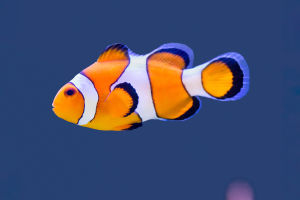In our perception, polar bears stand as remarkable beings in cold climates.
Inhabiting polar regions where icy conditions persist year-round, they appear seemingly impervious to the harsh environment surrounding them.
Why do polar bears exhibit such resilience to the cold? This question beckons an exploration into the intriguing biological intricacies underlying their adaptation.
Primarily, delving into the reasons behind polar bears' indifference to cold necessitates an examination of their physiological attributes. Polar bears boast dense fur and substantial layers of fatty tissue, both pivotal for survival amidst frigid landscapes.
The outer surface of polar bear fur is coated with a protective layer of oil, facilitating water repellence and preventing moisture from permeating through, thus contributing to maintaining the bear's warmth.
Moreover, a substantial layer of fat beneath their skin serves as a reservoir of energy and functions as insulation, enabling polar bears to regulate their body temperature effectively within exceedingly cold surroundings.
Furthermore, the behavioral patterns of polar bears play a crucial role in their ability to thrive in harsh, cold climates. They are inclined to seek refuge from biting winds, often gravitating towards sheltered spots amidst rocky formations or concealed behind ice formations to evade the chilling gusts.
Additionally, polar bears capitalize on their innate capacity for temperature regulation by assuming a compact posture during frosty nights, thereby minimizing their body surface area and reducing heat dissipation.
Moreover, the evolutionary trajectory of polar bears furnishes valuable insights into their acclimatization to extreme cold. According to scientific investigations, polar bears trace their ancestry back to brown bears, whose progenitors inhabited comparatively warmer environs.
Through the evolutionary process, polar bears gradually adapted to the necessities of their frigid habitat, evolving traits such as thick fur, ample fat reserves, and behavioral biases conducive to survival in the Arctic realms.
In addition, polar bears are endowed with a highly efficient metabolic system. Given the scarcity of sustenance in the Arctic terrain, polar bears have evolved mechanisms to maintain optimal energy utilization and storage, crucial for enduring prolonged periods of food scarcity.
Consequently, their metabolic rates are notably elevated, facilitating swift heat production to sustain core body temperature.
In essence, the resilience of polar bears to cold stems from a confluence of physiological adaptations, behavioral strategies, and evolutionary heritage tailored to thrive in the most hostile of environments.
The interplay of dense fur and fat reserves, coupled with efficient metabolic processes and cold-adapted behaviors, equips polar bears with the means to endure and flourish amidst extreme cold.
Their survival narrative is a testament to the marvels of adaptation in the natural world, offering profound insights into the resilience of life forms in the face of adversity.


